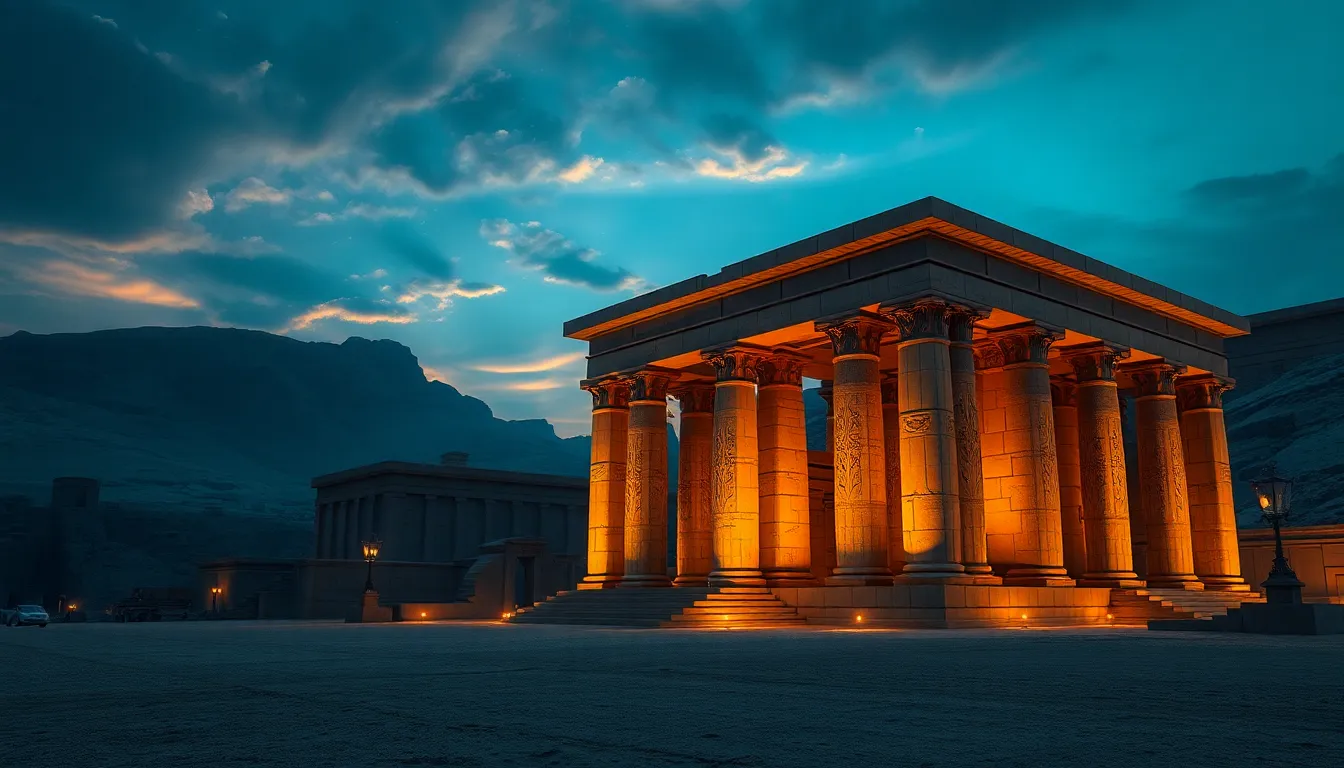The Temple of Seti I: A Journey Through Time
1. Introduction to Seti I and His Legacy
Seti I, the second pharaoh of the Nineteenth Dynasty of Egypt, ruled from approximately 1290 to 1279 BCE. He is often remembered for his military exploits, architectural achievements, and efforts to revive the power of the pharaohs following a period of decline. Seti I’s legacy is marked by his dedication to the gods, his restoration of temples, and his contributions to the arts and culture of ancient Egypt.
One of the most significant remnants of his reign is the Temple of Seti I located at Abydos. This temple not only serves as a testament to Seti I’s architectural vision but also stands as a vital cultural and archaeological site that offers insight into ancient Egyptian religion, art, and society.
2. Historical Context of the Temple’s Construction
During the reign of Seti I, ancient Egypt was experiencing a renaissance in power and culture. The political landscape was characterized by the need to reinforce the pharaoh’s authority and maintain control over the empire. Additionally, the religious environment was crucial as Egyptians sought to appease their pantheon of gods and ensure harmony in the afterlife.
The construction of the temple was motivated by several factors:
- To honor the god Osiris, the deity of the afterlife, whom the temple was dedicated to.
- To solidify Seti I’s legitimacy and divine right to rule.
- To serve as a center for religious practices and rituals aimed at ensuring the prosperity of the nation.
3. Architectural Features of the Temple
The Temple of Seti I is renowned for its grand architectural design and layout. Situated in Abydos, it is one of the largest and most sophisticated temples of its time. The temple complex is characterized by:
- A large entranceway flanked by two massive pylons.
- A series of courtyards, halls, and sanctuaries that lead to the inner sanctum.
- Intricate columns adorned with hieroglyphics and symbols.
Notable architectural elements include:
- The Hypostyle Hall, known for its towering columns and elaborate carvings.
- The sanctuary dedicated to Osiris, which contains a shrine and a sacred well.
- Reliefs depicting the pharaoh’s achievements and interactions with the gods.
Each of these elements not only serves a functional purpose but also carries deep symbolic meanings related to the afterlife and the divine order.
4. The Art and Iconography of Seti I’s Temple
The temple is adorned with exquisite reliefs and carvings that narrate religious and mythological stories. These artworks are significant for several reasons:
- They depict the grandeur of Seti I’s rule and his divine connection.
- They illustrate key scenes from Egyptian mythology, particularly those involving Osiris, Isis, and Horus.
- They serve as a historical record of rituals and ceremonies conducted at the temple.
The representation of gods and pharaohs within the temple’s art helps to communicate the ancient Egyptian belief in the divine nature of kingship and the importance of the afterlife.
5. The Temple’s Role in Ancient Egyptian Religion
The Temple of Seti I served as a vital center for worship and religious rituals. Its significance in ancient Egyptian religion can be understood through:
- The performance of daily rituals to honor Osiris and other deities.
- The celebration of festivals that marked important periods in the agricultural calendar.
- The use of the temple as a site for funerary practices and offerings for the deceased.
Furthermore, the temple was intricately linked to Egyptian beliefs regarding the afterlife, serving as a gateway to the realm of the dead, where the pharaoh could ensure his eternal existence alongside the gods.
6. Discovery and Excavation of the Temple
The rediscovery of the Temple of Seti I in modern times has greatly enhanced our understanding of ancient Egypt. Initially excavated in the 19th century, the temple revealed a wealth of artifacts and inscriptions that provided valuable insights into the period. Key archaeological findings include:
- Numerous inscriptions detailing Seti I’s military campaigns.
- Religious texts that illuminate ancient Egyptian beliefs about the afterlife.
- Artifacts such as pottery and tools that reflect daily life in ancient Egypt.
The discoveries at the temple have played a crucial role in reconstructing the historical narrative of ancient Egypt and understanding its complex society.
7. Conservation Efforts and Challenges
In recent years, conservation efforts have been initiated to preserve the Temple of Seti I from various threats. These efforts include:
- Restoration of damaged reliefs and structural elements.
- Environmental monitoring to prevent deterioration due to climate change.
- Public education programs to raise awareness about the importance of preservation.
However, challenges remain, such as:
- Vandalism and theft of artifacts.
- Exposure to pollution and natural erosion.
- Limited funding for large-scale restoration projects.
Addressing these challenges is essential to ensure that the temple remains a vital part of Egypt’s cultural heritage.
8. Conclusion: The Temple of Seti I in Modern Times
The Temple of Seti I endures as a symbol of ancient wisdom and cultural heritage. It attracts scholars, tourists, and enthusiasts alike, serving as an educational resource that continues to inspire awe and respect for ancient Egyptian civilization. As efforts to preserve this magnificent site continue, the temple remains not only a testament to Seti I’s legacy but also a link to the rich tapestry of human history and spirituality that it represents.
Visiting the Temple of Seti I today offers more than just a glimpse into the past; it provides an opportunity to reflect on the enduring power of mythology, religion, and the incredible achievements of a civilization that has captivated the world for millennia.




